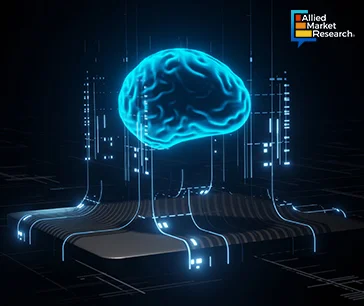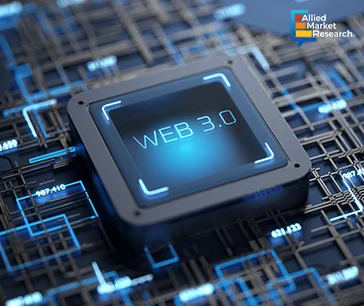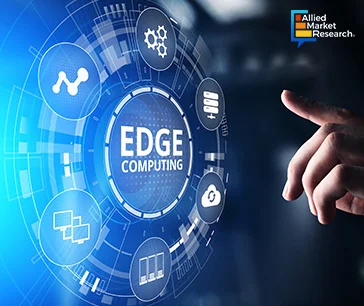Table Of Contents
- The adoption of generative AI is streamlining the process of automation
- Extended reality is gaining popularity due to advanced processing power
- High investments in climate technology to deal with climate change
- The adoption of Web 3.0 is changing the outlook of the sector
- Edge computing: An advanced innovation in cloud computing
- Fueling the expansion of the ICT sector with prominent trends

Onkar Sumant

Koyel Ghosh
Top 5 Trends for Q2 2024 That Will Revolutionize the Sector of Information & Communication Technology

The year 2024 is estimated to be another significant milestone for the Information and Communications Technology (ICT) landscape. Prominent trends and innovations have been reshaping the landscape of the industry. From the adoption of generative AI to the advent of edge computing, these trends are contributing to the transformation of the ICT sector. Allied Market Research offers quantitative as well as qualitative analysis of top trends for Q2 2024 shaping the future of the domain. This trend analysis assists in making well-informed investment decisions and propels long-term growth.
The adoption of generative AI is streamlining the process of automation
Various spheres including creative industries, data science, and AI research are increasingly adopting generative artificial intelligence (AI) to automate IT processes and identify potential security threats. Organizations are increasingly adopting generative AI to automate manual tasks, getting immediate benefits across cybersecurity, application development or DevOps, and IT operations. By integrating automation throughout various processes, Generative AI is revolutionizing the content creation and customer interaction landscape across diverse industries. It analyzes consumer data and personalized content as per recommendations. This personalization enhances customer satisfaction and creates a mutually beneficial scenario for both businesses and customers.

Extended reality is gaining popularity due to advanced processing power
Technological advancements in virtual reality (VR), augmented reality (AR), and mixed reality (MR) have increased the accessibility and affordability of (XR) experiences. The COVID-19 pandemic had heightened the adoption of XR technologies in several businesses. Remote work and physical distancing measures had propelled the adoption of these technologies, offering solutions for remote collaboration, virtual meetings, and remote training.

Virtual Reality (VR) is a fundamental element of XR which assists users in immersing themselves in a digital environment. Moreover, Augmented Reality (AR) superimposes digital content onto the physical world, enriching the perception of reality. Mixed Reality (MR), on the other hand, integrates aspects of both virtual and augmented realities by blending digital content with the physical world in real time.
High investments in climate technology to deal with climate change
Climate change is a universal challenge demanding an immediate and coordinated response. Climate technology plays a crucial role in this effort by providing innovative solutions that can reduce carbon emissions, adapt to the impacts of climate change and increasing temperatures, and deliver social and economic benefits. Advanced climate technologies are being developed to tackle the challenges resulting from climate change. Major global players are investing in emerging technologies, such as carbon footprint analysis software to develop storage solutions and carbon capture methods.
Additionally, advancements in climate technology are enhancing the competitiveness and financial feasibility of clean energy and sustainable solutions by drawing interest from businesses and investors to explore new markets. Governments, private sectors, and impact investors are promoting climate technology initiatives through funding, incentives, and supportive regulatory frameworks.
The adoption of Web 3.0 is changing the outlook of the sector
Web 3.0 represents the third generation of the internet, enabling websites and applications to process information like human cognition. This is possible through technologies such as artificial intelligence (AI), machine learning (ML), Big Data, decentralized ledger technology (DLT), and others. Decentralized web applications are a fundamental aspect of Web 3.0. These applications provide content creators and businesses with an alternative

an alternative avenue for web content management, diverging from established and conventional social media platforms. Efficient data exchange across decentralized networks is a vital component of Web 3.0 delivery, and enhanced web performance is necessary to achieve this. This data exchange is important for Web 3.0 applications using blockchain technology and decentralized ledger systems, where rapid and dependable data transfer is essential for upholding the integrity and security of transactions.
Edge computing: An advanced innovation in cloud computing
Edge computing strategically positions data processing nodes near both data sources and consumers. This decentralized approach to data management guarantees reduced latency and an efficient method of extracting valuable insights. Edge computing is especially critical for real-time operations in industries like healthcare, smart manufacturing, and logistics. Additionally, edge computing assists in processing time-sensitive data across remote locations with limited connectivity requirements.
Mobile edge computing is gaining popularity as it extends the abilities of cloud computing to the edge of the network, where devices and users are located. This technology is developed to be deployed at cellular base stations, enabling quick implementation of customer services and applications.

Fueling the expansion of the ICT sector with prominent trends
The rapid adoption of technologies like edge Computing, the Internet of Things (IoT), and Data Science has driven the growth of the Information and Communication Technology (ICT) sector. Apart from these factors, the adoption of generative AI, extended reality, web 3.0, edge computing, and climate technology has also contributed to the transformation of the domain. Trend analysis of the sector by AMR for Q2 2024 offers valuable insights into market movements, risk management, and performance evaluation.
To enter a new era of transformation in the ICT industry, feel free to contact our experts!

